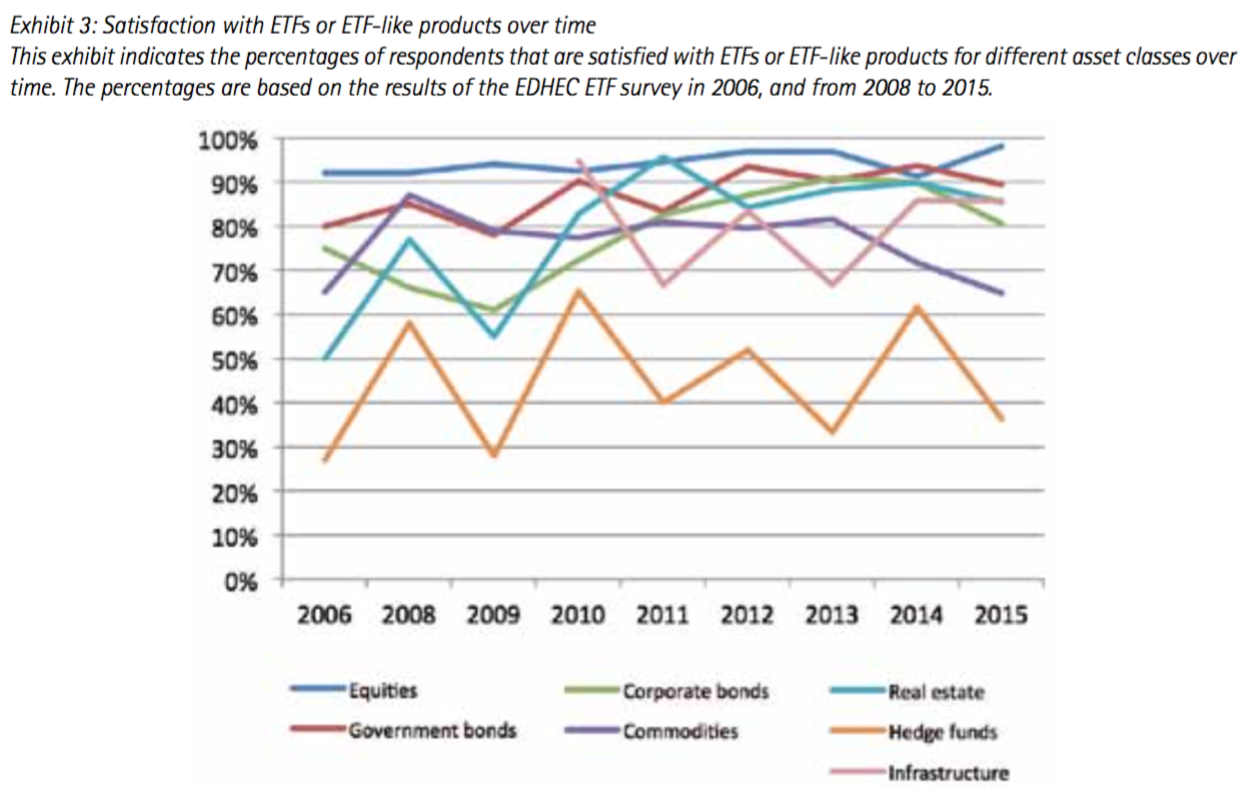Institutional appetite for exchange-traded funds (ETFs) and smart beta indexes is soaring, according to EDHEC-Risk Institute and Amundi’s latest survey.
Six out of seven asset classes posted a gain in ETF market shares, the joint European survey found. The increase was slight for equities, government bonds, and infrastructure, while corporate bonds, real estate saw double-digit jumps.
This uptick in ETF use tracked investors’ satisfaction with the vehicles, the survey found. Investors were most pleased with ETFs based on highly liquid asset classes, with equity ETFs enjoying a satisfaction rate of 98% in 2015.
Respondents were also optimistic about their future use of ETFs.
The percentage of investors planning to increase ETF allocations remained steady at around 60% since 2011, while more than a third said they would maintain their current level in 2015.
Concern for cost was the main driver of this appetite (80%), followed by performance (50%), transparency (46%), and liquidity (45%).
Investors were likewise bright about the use of smart beta ETF products. In 2015, 68% of respondents used ETFs to invest in smart beta, a significant increase from 49% in 2014. Smart beta ETFs also received an 86% satisfaction rate in 2015, compared to 74% in 2014.
Furthermore, three-quarters of respondents believed smart beta indexes provided “significant potential to outperform cap-weighted indexes in the long term,” the survey found.
However, investors argued there is room for further product development, especially since product launches have focused on only a few popular strategies such as value premium and defensive equity.
Some 94% also agreed that smart beta indices require full transparency on methodology and risk analytics.
“Transparency is not only the best protection against the risks arising from conflicts of interests, but it is also instrumental in improving the informational efficiency of the indexing industry,” EDHEC and Amundi concluded. The two firms have partnered on creating and selling factor-tilted ETFs.
 Source: EDHEC-Risk Institute & Amundi
Source: EDHEC-Risk Institute & Amundi
Related: The True Cost of Smart Beta; Too Many ETFs ‘Spoil Low Costs’; The $3 Trillion ETF ‘Boom’
